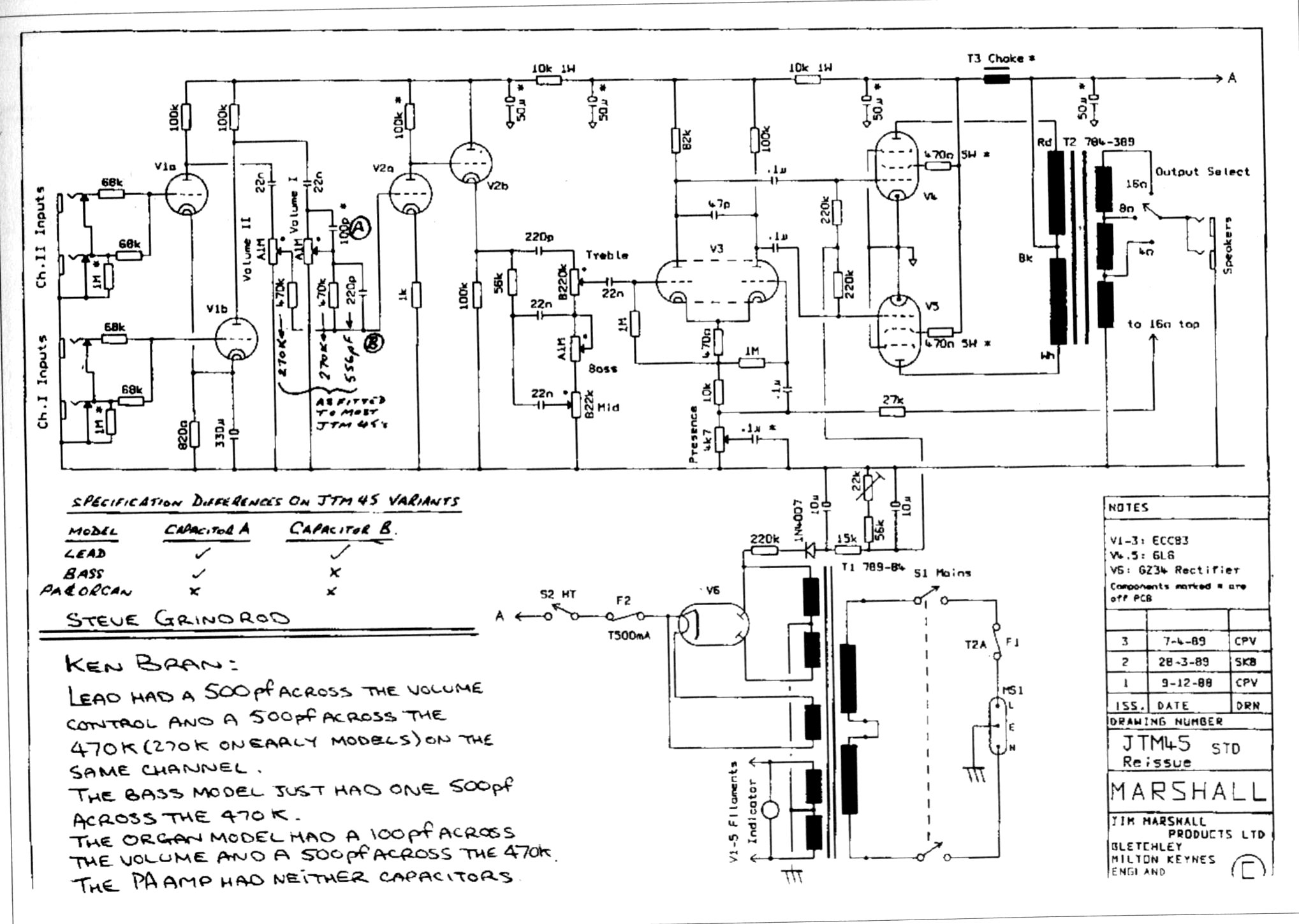After looking through about 20 or more pictures of various years of jtm45 amps I see they mostly have 270k mix resistors but the volume bright cap and mixer resistor treble cap seem to vary greatly if they have them or not. I'm assuming the most common volume bright cap is 100pF and that the common mixer treble cap was most commonly 500-560pF? I know the answer is always try for yourself to see what you like but I am legitimately curious about others opinions on it too. Do you think having the volume and mixer cap is too much brightness for these amps when you think of this circuit or do you prefer only using one or the other? So far my findings are with this particular circuit I like having no mixer cap and using a 100pF volume cap instead but that could change tomorrow lol.
I know marshall specs varied even more in the earlier years but did there seem to be a more common layout regarding these particular components?
Oh and completely unrelated but could someone help me understand what the difference in using a dual 16uF preamp filter cap with a 10k resistor between it VS using a single axial 16uF with obviously no extra resistor? I know it's not adding the values together making 32uF because of the resistor between it but I'm really struggling to understand what the difference is and how it would change the feel and sound. I know what going from 16 to 32uF at the preamp is like but I'm not sure what going from 16uF to 2x 16uF is doing and how it changes feel/sound
I know marshall specs varied even more in the earlier years but did there seem to be a more common layout regarding these particular components?
Oh and completely unrelated but could someone help me understand what the difference in using a dual 16uF preamp filter cap with a 10k resistor between it VS using a single axial 16uF with obviously no extra resistor? I know it's not adding the values together making 32uF because of the resistor between it but I'm really struggling to understand what the difference is and how it would change the feel and sound. I know what going from 16 to 32uF at the preamp is like but I'm not sure what going from 16uF to 2x 16uF is doing and how it changes feel/sound



